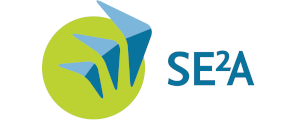Goals
The four main objectives of the SOAP project are:
- Assessment of discontinuities: If novel aircraft concepts are introduced into the air traffic system their impact on capacity (how many flights a day can be performed with one aircraft?) must be analysed. These discontinuities are relevant on airline/fleet as well as on airport level. SOAP will focus on airline level and will develop models for optimized fleet renewal scenarios.
- Assessment of multi-modal door-to-door journeys: The overall “Flightpatch 2050” goals of the European Commission are still that any door-to-door journey in future should not exceed 4 hours in total. With different intermodal transportation vehicles and changes in the overall performance structure of vehicles SOAP will make a first attempt to evaluate the overall door-to-door journey with multi-modal sustainable vehicles.
- Assessment of robustness of multi-criteria and multi-modul-simulations: SOAP will also assess the robustness of multi-criteria- and multi-modul-simulations.
- Assessment of applicability of down-scaled simulations: Finally SOAP will assess the applicability of simulation, which have significant down-scale-effects (like high-fidelity flight models reduction) and the usability of the outcome of such simulations.
Methods
The following figure gives an overview on the SOAP interaction of all involved PIs and their respective work programs within the project.
The Air Traffic Simulation environment will be used to conduct sensitivity analysis for the determination and classification of parameters that will have a major impact on the most important KPIs of the air traffic system. These parameters could be from the flight performance of novel aircraft (like cruising speed or altitude, climb and descent performance, endurance, etc.), the flight characteristics (e.g. reduced bank angle capabilities due to 1G wing) or Turn-Around-Times (due to different refueling or boarding processes). The results of the KPIs will be analyzed to find unsteady states like reduction of flights per day and aircraft. The sensitivity analysis will help to identify the drawbacks of novel and innovative aircraft designs.
Using an optimization model to determine optimal fleet renewal schemes over time, taking into account and introducing different novel aircraft types, brings the advantage of a better picture of the economic and ecological consequences of their respective adoption rates. Resorting to AdAS to decide the final feasibility of fleet decisions brings a level of detail into the optimization that cannot be reached by pure optimization techniques and as such significantly enhances the informative power of the model. Building an automated coupling between the optimization and the simulation will enable us to test and compute the renewal strategies for multiple different sets of input parameters, e.g., vary over introduction years, and so helps in evaluating the different transition pathways. After the integrated optimization/simulation-runs, the respective cumulative economic and ecological key figures for the chosen fleet over time can be computed via the set variable values and compared for different test scenarios.
The Fleet Renewal Optimization should be used to show for different sets of novel aircraft types, vetted by AdAS, how the market adoption over time might look, to give a picture of potential success. To this end, an automated coupling between the Air Traffic Simulation environment and a general purpose Mixed-Integer Programming solver needs to be designed and implemented. The optimization solver then needs to be able to call upon AdAS to decide feasibility for pre-determined sets of renewal decision.
Since the necessary multiple calls to the Air Traffic Simulation environment in its full extent will be too time consuming, it is additionally necessary to develop a suitable scaled version of the simulation that allows to only include certain parts of the whole system, while maintaining key characteristics.
To complete the transport path, intermodality to and from the airport is added. To ensure a profound multi-scale understanding of the underlying structures, processes and their interrelations, apt simulations for all logistics flows will be designed. The latter include material, personnel, energy and most importantly information. Using a multi-tier supply chain with the airport representing the equivalent of an OEM, the collaboration network between the feeding nodes will be established. Likewise, the airport serves as single source for the reverse network.
To coordinate the different entities within the network, a scale down approach for available information will be used. Starting with a centralized computation approach, availability of information is reduced to a cooperative/non-cooperative distributed and a decentralized approach. The respective methods capture behaviour of economically or personally independent entities, which/who are reluctant to share their information. Additionally, as in other supply networks, the airport cannot be seen as the leading node but as part of a coordination problem.
To achieve the 4-hour-door-to-door goal while keeping other KPIs and processes in mind, scaled versions of the airport will be designed to properly address interfaces between airport and hinterland operations. In particular, an abstraction to the strategic level will be used to address structural properties of transport flows, a tactical version for flow planning, and an operational one for evaluation and validation.
